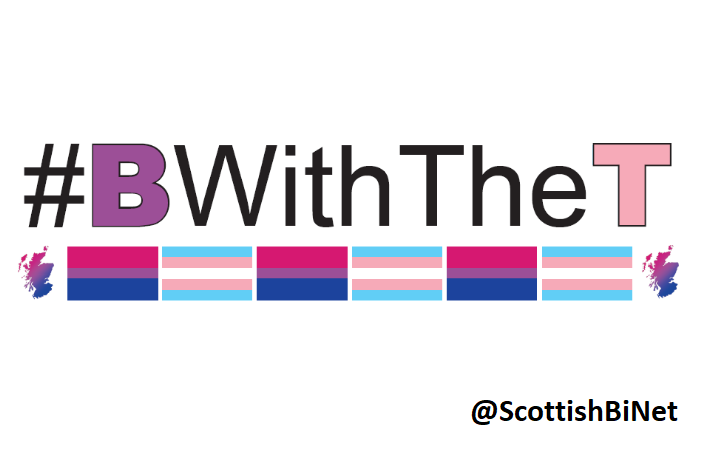Unless you’ve been living in a cabin in the woods, isolated from society for the last few years, you can’t have missed the increasing hate towards trans and non-binary people in the mainstream media, and from organisations and individuals on social media.
Their basic human rights are being threatened and oppressed, and trans and non-binary people shouldn’t be left to fight that battle alone.
That’s why it’s so important to let people know that we, the bi+ community, are standing in solidarity with trans and non-binary people.
The #BWithTheT hashtag is a quick and simple way to show the trans and non-binary community that we support them.
We’ve had people coming up to us at pride because of our #BWithTheT banner, as it’s easily identifiable in a crowd, a sign of safety to many people.
There is a significant intersection of the trans and bi+ communities, with a large proportion of trans or non-binary people using one or more of the bi+ labels.
According to a report by MAP, more than 40% of trans people identify as bi+. Which is why our work will always be inclusive of trans and non-binary people.
And you can help as an individual by supporting Scottish Trans Alliance’s Equal Recognition campaign, more details here: https://www.scottishtrans.org/equal/
Cis people (of all sexualities) here’s a few tips on being a good trans and non-binary ally:
- Normalise telling/asking people about pronouns by putting your pronouns in your social media bio(s), and by telling people what pronouns you use when you introduce yourself. If you have the ability to put your pronouns on your name badge, do so!
- Wear or display things in your workspace that show you are an ally. This could be badges or stickers that show the #BWithTheT or say ‘trans ally’ (there’s many wonderful designs out there by many talented people)!
- If you do accidentally misgender someone, simply correct yourself and move on, making a scene out of it can be awkward and embarrassing for the person who’s been misgendered, and it makes it all about you instead of them.
- Practice using singular they/them pronouns, and familiarise yourself with neopronouns.
- Instead of using (s)he or s/he in documents, use they, which is inclusive of all genders.
- Reach out to trans and non-binary friends and let them know that you’re there to support them.
More details about the #BWithTheT campaign and to add your name to the open letter, visit BWithTheT.org



